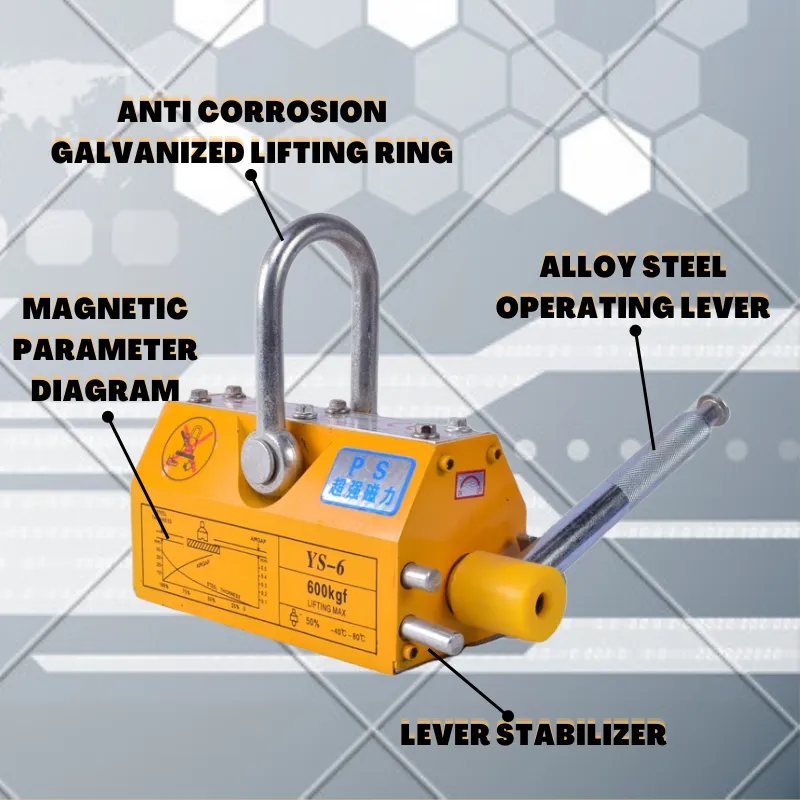Floor Mounted Gantry Crane for Efficient Material Handling Solutions
The Versatility and Efficiency of Floor Gantry Cranes
In today’s fast-paced industrial landscape, there is an ever-increasing demand for efficient material handling solutions. Among the myriad of options available, floor gantry cranes have gained significant popularity in various industries due to their versatility, cost-effectiveness, and ease of use. These cranes are engineered to lift and move heavy loads with precision, making them indispensable in warehouses, manufacturing facilities, construction sites, and even in some logistical operations.
A floor gantry crane consists of a horizontal beam supported by two or more legs, which are typically fixed to the ground. The crane is equipped with a hoist that allows it to lift materials from one position to another within its operating range. One of the primary advantages of a floor gantry crane is its mobility; many designs come with wheels, enabling movement across the workspace. This feature allows operators to handle heavy loads without the need for complex overhead systems or large, permanent structures, making it a flexible solution for various tasks.
One of the significant benefits of using floor gantry cranes is their ability to handle loads in constrained spaces
. Unlike traditional overhead cranes that require extensive installation and spatial considerations, floor gantry cranes can fit in smaller work areas, providing efficient service without consuming too much floor space. This adaptability is critical in industries where space optimization is essential, such as automotive assembly lines or manufacturing plants where machinery and materials constantly change.floor gantry crane

Moreover, floor gantry cranes are available in various sizes and weight capacities, catering to different needs. From small units designed to lift a few hundred pounds to large cranes capable of handling several tons, businesses can select a gantry crane that perfectly aligns with their operational requirements. This scalability means that companies, regardless of their size, can utilize gantry cranes to improve their material handling processes.
Safety is a paramount concern in any industrial operation, and floor gantry cranes are often designed with various safety features to mitigate risks associated with lifting heavy loads. These may include locking mechanisms, emergency stop functions, and limit switches that prevent the crane from exceeding its operational limits. Additionally, operators should be trained in safety protocols, ensuring that they understand how to operate the crane efficiently and safely. Properly maintained and operated cranes can significantly reduce the risk of accidents, making workplaces safer for everyone.
Floor gantry cranes also represent a cost-effective solution for many companies. They are typically less expensive to purchase and install compared to building a permanent overhead crane system. Furthermore, their versatility means that companies do not need to invest in multiple lifting solutions; a single gantry crane can often handle various tasks, from moving materials during assembly to loading and unloading products for shipping.
In conclusion, floor gantry cranes offer a unique blend of versatility, cost-effectiveness, and safety, making them an ideal choice for many industrial and commercial applications. Their ability to maneuver in tight spaces, coupled with a range of sizes and load capacities, ensures that they can adapt to the specific needs of different workplaces. As industries continue to evolve and demand more efficient material handling methods, the floor gantry crane stands out as a practical and reliable solution that can significantly enhance productivity and safety in the workplace. Investing in this equipment can lead to improved operational efficiency, allowing businesses to thrive in a competitive environment while ensuring the well-being of their workforce.
-
Affordable 2000 lb Gantry Crane | Heavy-Duty & PortableNewsSep.01,2025
-
4000 lb Gantry Crane | Adjustable, Heavy-Duty Lifting SolutionsNewsAug.31,2025
-
Portable 2000 lb Gantry Crane | Heavy-Duty & AdjustableNewsAug.30,2025
-
Versatile Lifting Solutions with Gantry and Overhead CranesNewsAug.29,2025
-
The Versatile Mobile Gantry Crane SolutionNewsAug.29,2025
-
Reliable Movement with Heavy Machinery Skates and RollersNewsAug.29,2025
-
Reliable Lifting Performance with 2000 lb Gantry Crane and 2 Ton Overhead SystemsNewsAug.29,2025
